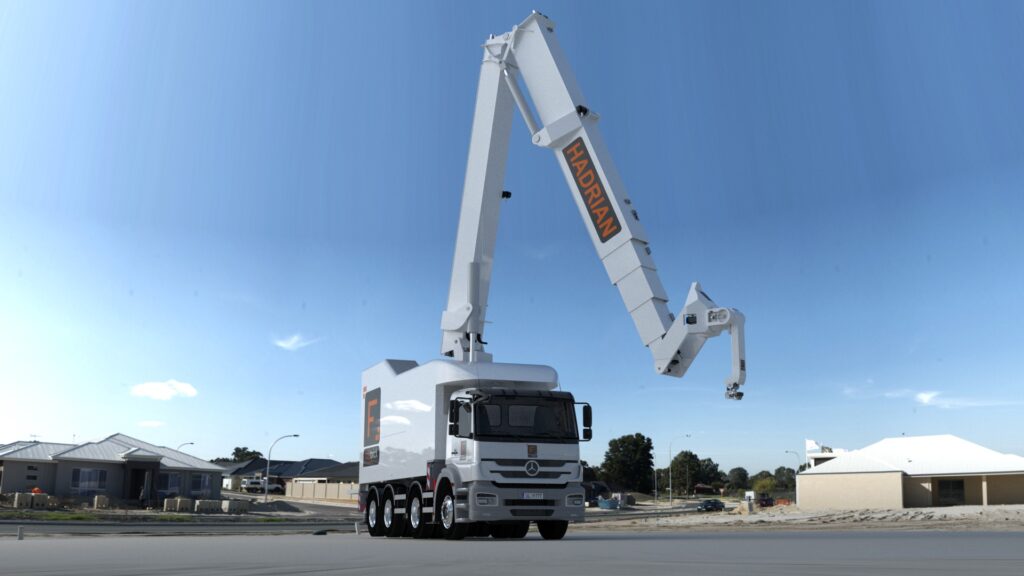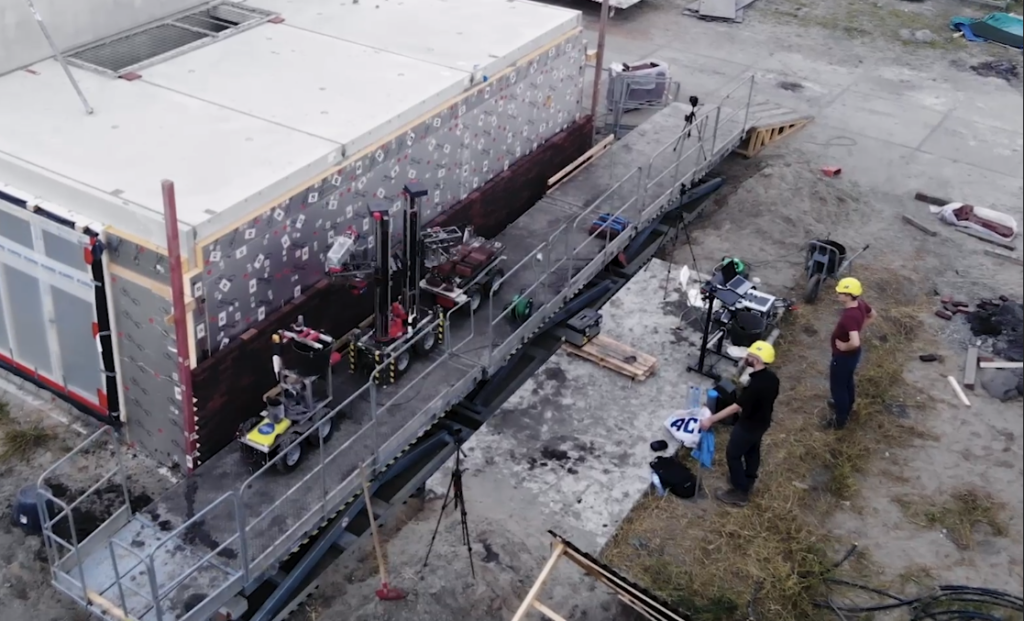Dutch startup Monumental has emerged from stealth with $25 million dollars in funding for its bricklaying robotic system. Whether or not its technology can be categorized as “additive construction” is debatable, but, nevertheless, the company is sure to impact the large construction automation industry
Founded in 2021 by CEO Salar al Khafaji and CTO Sebastiaan Visser, Monumental’s team appears to be a veritable buffet of expertise, with veterans from Palantir, Dyson, and Shopify. According to CEO al Khafaji, he wanted the startup to work on a project that would be able to bridge the gap between AI-facilitated automation and the profitability of the global construction market. Due to a shortage of bricklayers in both Europe and the United States, a robotic system became an appealing way to fill the space in that labor pool.
Next-Gen Brick Laying Bot?
Bricklaying robots aren’t exactly new. Fastbrick Robotics unveiled its Hadrian 105 unit back in 2016, with an upgrade to the still-in-use Hadrian X released in 2017. Construction Robotics’ S.A.M. unit was also unveiled in 2016. Monumental’s own website links to a rather interesting look at the history of masonry robots. Like most of the great leaps we’ve seen in technology over the last fifty years, the real trick up Monumental’s sleeve was making a machine much smaller than its other counterparts on the market.
Unlike the truck- and crane-sized systems of other firms, Monumental’s brick laying system, made up of three robots operating in tandem, has a much smaller footprint and requires fewer humans to monitor. The trio of units addresses one of the common issues faced by construction robots: navigating uneven construction sites. Two smaller robots traverse the construction site to bring bricks and mortar mix to the larger bricklaying system. The bricklaying bot extrudes mortar onto the wall with one head and lays a brick with a claw.
Also unlike other bricklaying machines, which have been advertised based on how much faster they are than human workers, Monumental’s unit operates at about the same speed as a person. The company still believes it has an edge in human labor due to its ability to deploy multiple units at a single job site—significantly easier than conjuring more skilled bricklayers out of the ether.
The robots themselves are said to cost around $25,000 to build and the recent round of funding will be used to increase the size of Monumental’s current fleet.
What does innovation look like?
Monumental’s efforts in developing a long-theorized robotics system should be lauded. But are we missing the forest for the trees when we try to replace human labor instead of eliminating it? Does it really make sense to develop robots to replace bricklayers when we have robots that replace the need for bricks altogether?
Additive construction provides an amazing opportunity to reduce not just labor cost, but material cost and transportation as well. If you’re going to rig up a robot with a mortar extruder to lay bricks, and train a bricklayer to use and supervise it, maybe it just makes more sense to train that bricklayer to print a building in concrete. Addressing labor and housing shortages means taking an honest look at how we construct buildings and retraining global workforces for a more sustainable vision of the future.
Subscribe to Our Email Newsletter
Stay up-to-date on all the latest news from the 3D printing industry and receive information and offers from third party vendors.
You May Also Like
Further Understanding of 3D Printing Design at ADDITIV Design World
ADDITIV is back once again! This time, the virtual platform for additive manufacturing will be holding the first-ever edition of ADDITIV Design World on May 23rd from 9:00 AM –...
3D Printer Maker EVO-tech Reborn as NEVO3D — Once More With Feeling
EVO-tech was a 3D printing service and original equipment manufacturer established in 2013 and based in Schörfling am Attersee, Austria. The company produced high-quality material extrusion systems featuring linear bearings,...
3D Systems Brings 3D Printed PEEK Cranial Implant to the U.S. with FDA Clearance
For more than 10 years, 3D Systems (NYSE:DDD) has worked hand-in-hand with surgeons to plan over 150,000 patient-specific cases, and develop more than two million instruments and implants from its...
CDFAM Returns to Berlin for Second Annual Symposium
The second CDFAM Computational Design Symposium is scheduled for May 7-8, 2024, in Berlin, and will convene leading experts in computational design across all scales. Building upon the first event...

































